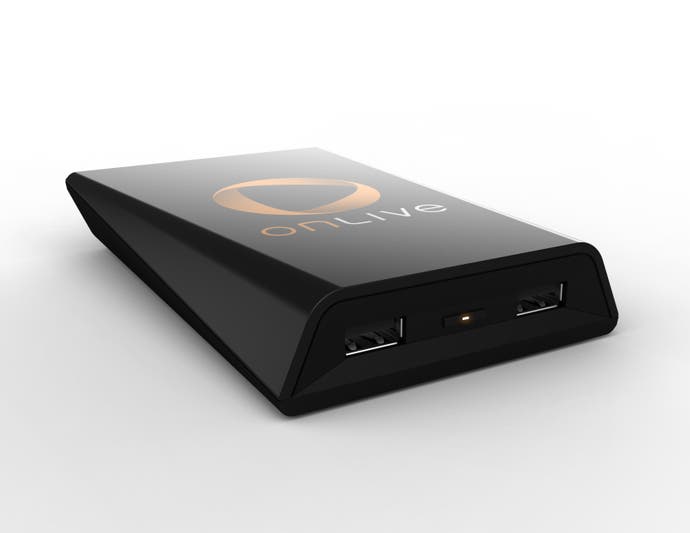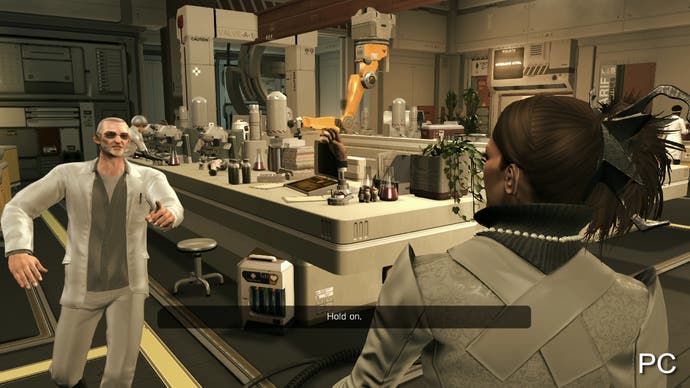Digital Foundry vs. OnLive UK
So then: can it possibly work?
Having dominated the mainstream media last week after what can only be described as a hugely successful UK debut at the Eurogamer Expo, OnLive has finally arrived in the UK, offering nigh-on instant access to a range of over 100 games via the technological magic of cloud gaming.
We all know the score: OnLive reckons that the age of owning your own gaming hardware is coming to an end and that the future is all about streaming gameplay video across the internet from secure datacentres, with "dumb terminal" clients beaming back your joypad, mouse or keyboard commands. There's no need to buy new console or PC hardware - the servers will be upgraded instead - and the vision is for OnLive to become almost like gaming's equivalent to the MP3 player: a compressed, compromised, not quite as good as the full-fat product, but more than good enough for the mainstream.
Or is it? Digital Foundry took the US launch for a spin 14 months ago and came away impressed with the potential and the achievements in battling latency, but we didn't think much of the pricing structure or indeed the performance or image quality.
In this detailed analysis of the UK product, we'll be covering off various elements of the OnLive experience, and assessing the viability of the platform from an enthusiast gamer's perspective. Topics we're covering include the following:
- The OnLive Micro-Console
- Video Quality
- Latency
- Game Performance
- Pricing/Value
- The Infrastructure Challenge
- OnLive UK: The Digital Foundry Verdict
To commence the festivities, let's take a look at the ingredient missing from our original US coverage: a breakdown of the micro-console, OnLive's dedicated hardware platform.
The OnLive Micro-Console
When we originally tested out the US version of OnLive, the bespoke micro-console wasn't available, and its introduction is one of the major new additions to the overall offering and a centrepiece of the UK launch. We rather like it.
Taking the form-factor of a slightly overweight USB "passport"-sized hard drive, the micro-console offers audio-visual outputs in the form of HDMI, an AV socket for analogue component cables plus Toslink SPDIF and analogue audio outputs. Other supported inclusions take the form of two USB 2.0 ports for appropriate controllers, and Bluetooth support for additional inputs such as wireless headsets. It also boasts low-latency wireless connectivity with OnLive's own joypads - how much of an advantage this offers over the standard Xbox 360 wireless controller (which has latency in the region of 8ms according to 360 developers we've spoken to) remains to be seen.
Functionally rich, the only "must have" technological element missing from the micro-console is Wi-Fi connectivity: on the rear of the unit is a standard Ethernet port and the unit really should be attached directly to the router, though you could in theory use a remote access point. The omission of Wi-Fi is a big issue from a convenience perspective, especially bearing in mind that the service's major selling point is supposedly ease-of-use. However, factoring in the extremely variable performance we got from running OnLive on Wi-Fi, it is probably for the best from a performance perspective.
The micro-console itself is cleverly designed around off-the-shelf smartphone SoC (system on chip) technology, with a Marvell Armada 1000 chip powering the show. Running by default at 1.2GHz in a dual-core configuration (although OnLive says it is underclocked for power efficiency reasons), the ARM architecture is supplemented by an advanced media decoding engine which supports 1080p60 and stereoscopic 3D playback, effectively future-proofing the system for many years to come.


The chip also features excellent upscaling support, so if you have a native 1080p monitor, you can use the unit itself for resizing 720p to "full HD" and cut out additional processing latency on the display. Quality of the scaling looked pretty good, but quibbling over upscaling quality is probably the least of the concerns you'll have with OnLive in action owing to the enormous issue of compression artifacting on fast-moving scenes.
However, the notion of the unit itself doing the upscaling has value: OnLive operates on the knife's edge of human perception when it comes to latency. Any advantage you can get in terms of reducing input lag should be embraced: conceivably, the combination of a wired controller in concert with upscaling to the precise res of your display could shave off anything from one to perhaps even three frames of lag, depending on your display.
We rather like the OnLive joypad. Clearly modelled on the Xbox 360 wireless controller, but with an improved d-pad and a nice, weighty heft to it, it comes across as equivalent in quality to a high-end third-party pad. It doesn't quite feel as good in the hand, but it does the job nicely and offers up all the functions we would want, including rumble.
As pointed out in the Eurogamer review though, there are games that demand mouse and keyboard. We must assume that this is down to the platform holder's wish to boost its library with existing titles while at the same time presenting as little inconvenience to the developer as possible. However, the notion of accepting games into the ecosystem without joypad support is effectively locking micro-console owners out of some of the games they may have paid for (assuming they purchase the PlayPack subscription), and the idea that users need to front up their own mouse and keyboard to be able to play them seems a little unfair when OnLive TRCs (technical requirement checklist) should be mandating pad support on all games.


Minor annoyances also crop up. We'd like to be able to turn on the OnLive micro-console with the supplied joypad, but it doesn't seem to happen. Conversely we'd like to turn the console off using the power button but that doesn't seem to work, necessitating a controller-driven shutdown. We'd also rather like the option to switch between limited and full-range RGB - by default the HDMI output does seem to be rather washed out compared to the PC client.
Overall, bearing in mind the build quality of the unit, the sturdiness of the pad and the fact that OnLive has included virtually every possible cable you could think of (short of the analogue component break-out lead) the value proposition of the micro-console isn't bad at the £69.99 level, bearing in mind that the entry-level Xbox 360 weighs in at almost twice the price. In fact, the only way you could source a machine this cheaply is to get hold of a second-hand 360 - and, for obvious reliability reasons, this wouldn't necessarily be a great move.
Value is further boosted by the fact that the unit itself only consumes around 6-7 watts of electricity, making it cheaper to run than any other non-handheld gaming platform. It draws so little power that the unit doesn't even need any kind of active cooling system. Even after hours of play, the unit itself was merely warm to the touch. As the number one reason for failure in a home console is too much heat in too small a box, the signs look good for the micro-console's long-term reliability. Also worth factoring into the equation is that if you stick with OnLive, the emphasis is on the company to upgrade its servers. It's highly unlikely you'll ever need to upgrade your kit, because functionality or performance can be boosted or tweaked by firmware upgrades (of which there was one during the last weekend).








